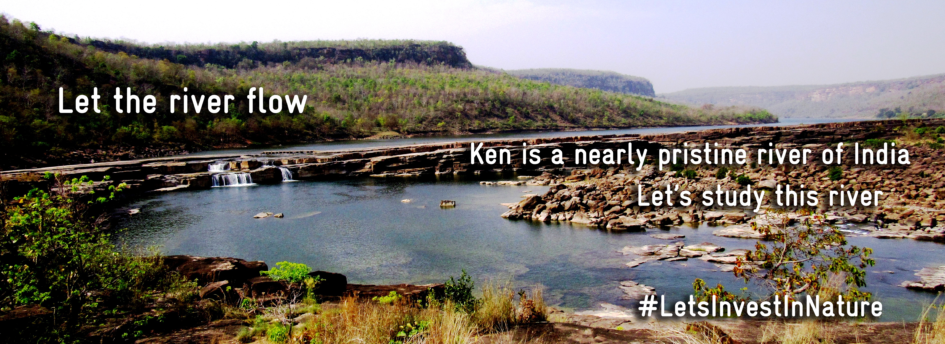Shubhangi Singh: Water without a doubt is a precious resource, the dire conditions of which, has been in discussions and debates for a good many years now. Rivers are the lifeline of any healthy ecosystem. Our very survival depends on the water we obtain from wells, lake and rivers. They sustain life from the source to the very end. And this is exactly why when we embark upon any large-scale project, we need to study the impact the change would have on the river’s flow and on all it’s dependants. River Ken, a tributary of Yamuna that flows through Uttar Pradesh and Madhya Pradesh, is a good example in this case of concern where developmental projects could possibly instigate a chain reaction amongst it’s dependents.
River Ken regulates groundwater recharge and provides vegetation that is found at it’s banks. It is also flush with fish and the sand found here is an important commodity. In light of proposed diversion of water from Ken, it is crucial to note that any change in flow may stifle ecosystem services. Although, due to limited human activities, the river has largely stayed at it’s natural form thus far, the downstream will be, significantly, affected by the proposed diversions in the river’s flow. Everything the river touches in it’s path could take a blow due to these developmental projects planning diversions in the river’s waters. Hence, there is much at stake here. Apart from recharging ground water and sustaining a thriving fishing sector that provides livelihood to many, the river also provides for the Panna Tiger Reserve, Gharial Santuary and the Raneh Falls — all major tourist attractions.
The river’s flow which results in erosion of rocks, provides sand that is utilised extensively in Uttar Pradesh making it a much sought after asset. So then, would one make fundamental changes to a multi-billion-rupee enterprise without thoroughly studying its overall impact? It would be carefully studied and debated and so, Ken should also be treated like a tangible enterprise that requires the same amount of cautious negotiating before embarking upon any action. So far, the river has remained in near pristine state because of little urban or industrial development and a largely rain-fed agriculture in its basin, but the downstream areas in Banda, Panna and Chhatarpur districts will be impacted by the proposed flow diversion. The impact of the proposed flow diversion plans needs to be assessed on the downstream areas in terms of groundwater recharge, sand, fish, riparian vegetation and water quality before putting it to action. A detailed policy must be formulated to regulate sand extraction based on its annual availability and other smaller rivers should be studied to develop an appropriate methodology and framework for evaluation of river ecosystem services.
Often in our attempt to maximise benefits from rivers for the sake of irrigation, for domestic and industrial water supply and for hydropower, we treat our rivers merely as a channel or source of water when infact, it is so much more than that. River water nurture, nourish and revitalise everything on it’s path and, which is precisely why, the researchers studying the impact on the environment surrounding the river recommend that we spend more time understanding our little know Ken River. Rivers are, unequivocally, renewable treasure chests and should be preserved like one, not only for the present to enjoy it’s perks but for the sake of many future generations to come.

